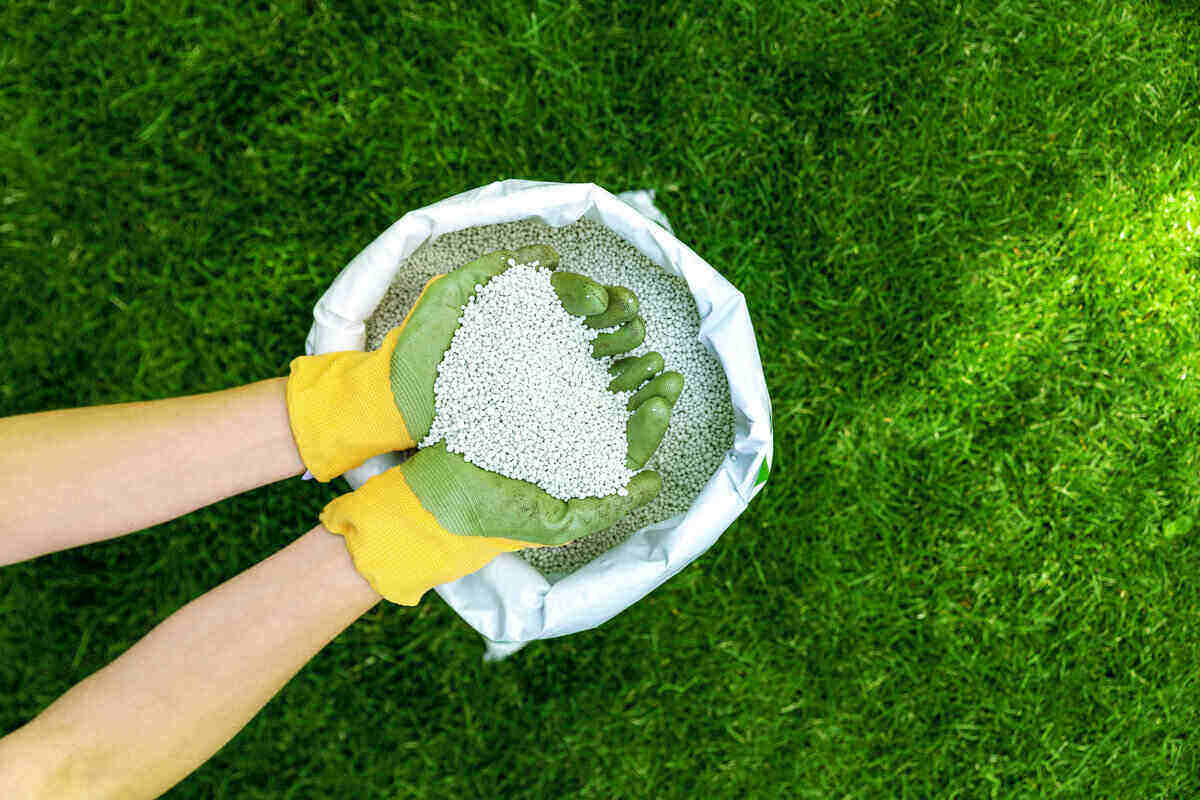
They say you are what you eat, and it’s the same with your lawn. To grow healthy, vibrant turfgrass year-round, you must know how to choose the right lawn fertilizer for regular maintenance and solving specific problems.
Several factors must be considered, but the most important ones are your soil test, your grass type and specific needs for the season, and how much time and money you can invest in fertilizing. This article covers all that and more, including expert tips that offer a pro’s view on fertilizing home lawns.
Why Lawns Need Fertilizer
Truth be told, lawns can survive without fertilization, but they are rarely able to grow into the emerald-green, thick, carpet-like turf we all love. When grass has access to all the nutrients it needs, it has a more uniform texture, denser growth, and a nice bounce when you walk on it.
Well-fed turf benefits more than its appearance. It grows stronger and healthier, can more effectively handle pests and diseases, crowd out weeds, withstand drought and extreme temperatures, and recover faster from traffic and play.
According to Penn State University, “Fertilization does more to improve poor-quality turfgrass or to maintain good-quality turfgrass than any other management practice.” Knowing how to fertilize your lawn and what fertilizer to choose is a valuable skill for any homeowner who loves a beautiful, thick lawn.
Note: If you don’t have time to compare and choose fertilizers, you can hire a pro to fertilize the lawn.
See Related: How to Prevent Weeds from Growing in Your Lawn
Understanding Fertilizer Numbers and Nutrients
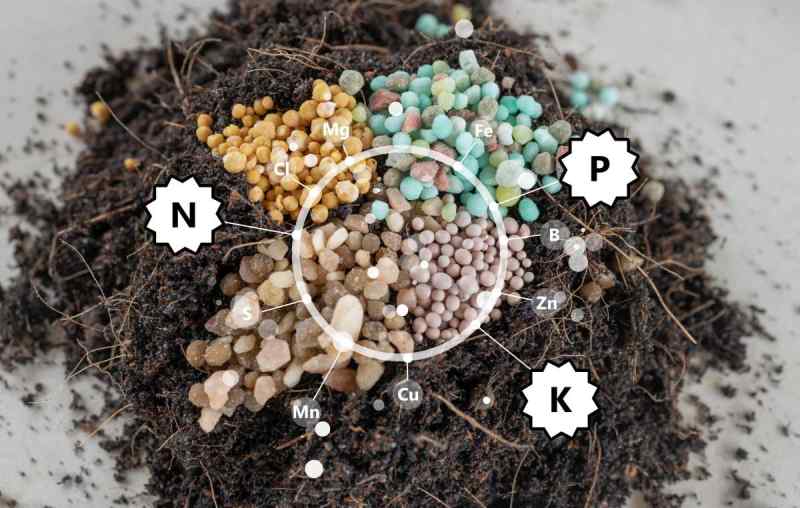
Turfgrass requires 16 nutrients for optimal health. All are important and can cause problems when lacking or in excess, but six are needed in higher amounts in the soil and are considered primary nutrients or macronutrients: oxygen, carbon, hydrogen, nitrogen, phosphorus, and potassium.
Plants absorb oxygen, carbon, and hydrogen from the air and water, so the three primary macronutrients you need to ensure grass has enough in the soil are: nitrogen, phosphorus and potassium.
Each plays an essential role in plant growth:
- Nitrogen supports the growth of healthy, green grass blades.
- Phosphorus gives turf deep, strong roots.
- Potassium improves grass’s resistance to stress and helps it handle pests, diseases, drought, and extreme temperatures.
Among them, nitrogen stands out. Grass plants consume it from the soil daily in high amounts, so you must replenish the reserve periodically during the growing season. It’s why nitrogen is most often the largest percentage in the NPK numbers.
What are NPK numbers?
The NPK numbers are the three large numbers separated by dashes on every commercial fertilizer (e.g., 10-10-10). They are also known as fertilizer rate or guaranteed analyses.
The fertilizer numbers tell, in percentages, how much of the three essential macronutrients (nitrogen, phosphorus, and potassium) is in the bag and allow you to calculate the weight in pounds for a specific product.
Here’s an example:
| NPK numbers on the bag | 20-4-8 |
| Nutrient percentage | 20% nitrogen4% phosphate (a soluble form of phosphorus) 8% potash (a soluble form of potassium) |
| Nutrient by weight in a 5-pound bag | 1 pound of nitrogen (20% * 5 pounds) 0.2 pounds of phosphate (4% * 5 pounds) 0.4 pounds of potash (8% * 5 pounds) |
Most organic fertilizers and some conventional products also contain secondary macronutrients (magnesium, calcium, sulfur) and micronutrients (boron, chlorine, copper, iron, manganese, molybdenum, nickel, zinc). They are mentioned in the guaranteed analyses on the back of the package.
How to Choose a Fertilizer Using the NPK Numbers
Choose a fertilizer that includes only the nutrients you need. If you cannot apply phosphorus because local regulations restrict phosphorus fertilizers, choose a fertilizer with zero as the second NPK number (e.g., 10-0-4).
Select a mix close to the soil test’s recommendations. For example, if your soil test recommends adding 4 pounds of N, zero pounds of P₂O₅ (P2O5 – phosphate), and 2 pounds of K₂O (K2O – potash) per 1,000 square feet, you need a product without phosphate and twice as much nitrogen as potash.
In this case, the first NPK number must be twice as high as the third one, and the second, zero, so you’re searching for a fertilizer with an NPK ratio like 20-0-10.
Determine Your Lawn’s Nutrition Needs and Goals
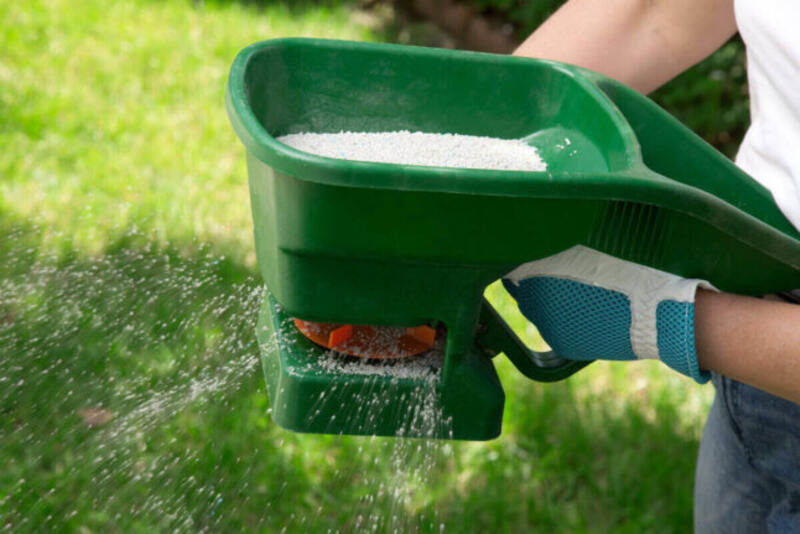
If you determine what you want from your lawn (e.g., greener color, thicker turf, and fewer disease problems) and what it needs to achieve that goal, you’ll be halfway to finding the best fertilizer for your grass.
Consider Your Lawn’s Goals
A healthy, strong lawn that requires less mowing and fewer pesticides and herbicides is better fertilized with more natural and less aggressive products such as:
- Organic fertilizers.
- Grass clippings: Leaving grass clippings on the lawn as mulch can reduce nitrogen applications by up to 25%.
- A slow-release, low nitrogen fertilizer.
- Compost: It improves the soil’s texture and quality and helps the grass better absorb nutrients.
If you want to maintain a pristine, dark green, thick, golf-course-like lawn, you’ll need more precise and stronger treatments than organic options usually provide. These include higher-nitrogen fertilizers and occasional liquid applications to maintain the perfect color. You’ll also need to fertilize more often.
Consider Your Grass Type
Not all turfgrass types react the same to fertilizers. For example, tall fescue is more susceptible to brown patch disease, which is worsened by excess nitrogen in the spring. To reduce the risk of infestation and limit damage, apply a winter fertilizer late in the fall and skip the spring treatment.
Centipedegrass is more sensitive to high levels of phosphorus in the soil than other turfgrasses. Excess phosphorus limits its ability to absorb iron and can lead to chlorosis more quickly in a centipede lawn. If you grow centipede, avoid adding phosphorus unless the soil is deficient.
Talk to the local Extension Office expert about your grass type’s needs to ensure you choose the best lawn fertilizer.
See Related:
- How and When to Fertilize Centipedegrass
- Best Fertilizers for St. Augustinegrass [Reviews]
- Best Fertilizers for Bermudagrass [Reviews]
Consider Your Lawn’s Condition
Slow-growing seedlings with reduced tillering and a red to purple blade color indicate that your lawn doesn’t have access to enough phosphorus. Consider a fertilizer that provides phosphorus (if the state’s law allows it), but do a soil test first.
Potassium deficiency is not as visible since it manifests as a reduced tolerance to stress. A lawn lacking in potassium shows subtle signs such as:
- Wilts faster in drought and heat
- Exits winter dormancy with more damage
- Is more extensively affected by diseases and pests
Healthy lawn? Focus on nitrogen. If your turf is beautiful, deep green, and looks healthy and thriving, the right lawn fertilizer is high in nitrogen to support top growth and lower in phosphate and potash.
See Related: 5 Tell-Tale Signs Your Lawn Needs Fertilizer
Conduct a Soil Test
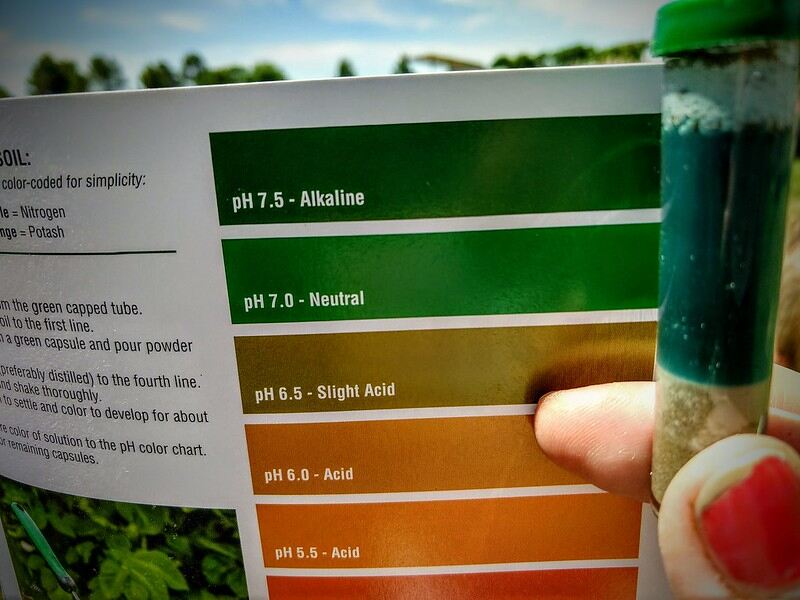
Why guess what your lawn needs when you can practically get a recipe for the treatment? Take a soil sample (it’s so easy!), send it to the local Extension Office, and you’ll get back the soil test results with expert recommendations on the right turf fertilizer and soil amendments to buy.
You can also use a test kit to perform the soil test at home, but I think it’s better to get a professional’s opinion on your lawn’s soil quality at least once every two to three years. You’ll get more accurate results and detailed recommendations on how to improve the soil and your turf.
See Related:
Determine the Type of Fertilizer
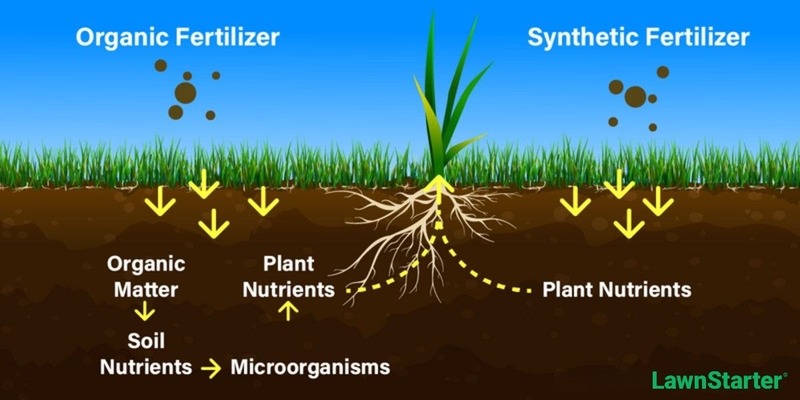
What type of fertilizer is best for your lawn? It depends on your goals and your lawn’s needs. Let’s see how you can choose among the most common types available on the market.
Organic vs. Synthetic
Organic lawn fertilizers are made of natural materials, and are gentler with the plants and the environment, while synthetic fertilizers act faster and allow more control over the treatment.
Michelle Zdybowicz, president and co-founder of Jeden Bioscience, a company specializing in organic fertilizers, biochar, and natural soil amendments, says organic fertilizers’ top benefit is that they build healthier soil.
“They not only provide essential nutrients but also add organic matter, fostering beneficial soil microbes that improve water retention and nutrient availability,” says Zdybowicz.
Conventional fertilizers for grass, on the other hand, are made in the lab with handpicked inorganic chemicals. They are more concentrated, provide faster results at a lower cost, and are often the better choice to solve a specific nutrient deficiency. But they can deplete the soil over time and can harm the environment.
“In wet weather, they can leach away quickly, which is something to watch for. In dry conditions, their effectiveness may drop without additional watering,” says Zdybowicz.
See Related:
Complete vs. Incomplete
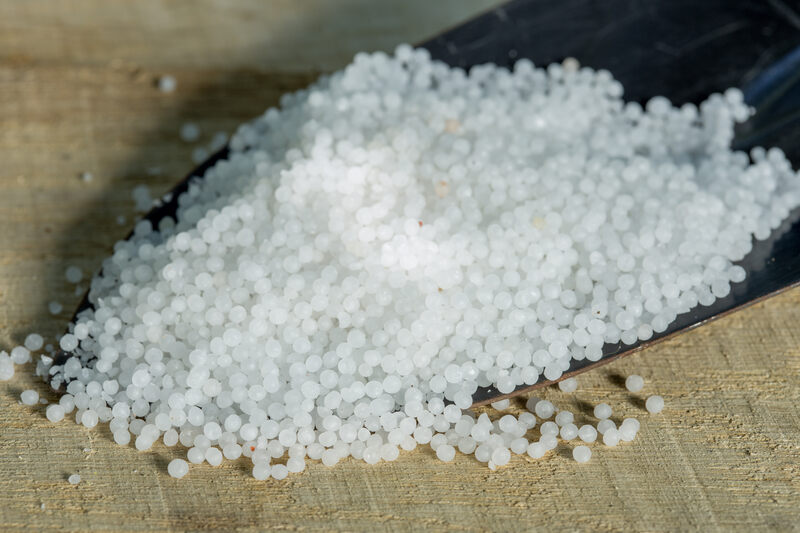
A complete fertilizer is the most common choice for newly installed lawns that require all the essential macronutrients. Complete fertilizers can have:
- Equal amounts of nitrogen, potash, and phosphate (balanced fertilizers).
- Some nutrients in higher amounts than others (unbalanced fertilizers).
Unbalanced fertilizers cover a wide range of NPK ratios, so you’ll often find the ideal fertilizer for your lawn’s needs and soil test recommendations in this category.
Incomplete fertilizers for grass include only one or two nutrients and allow you to make targeted treatments. Common examples are:
- Phosphate-free fertilizers (e.g., 32-0-4), which are readily available in states where phosphate fertilizers are banned to reduce nutrient pollution.
- Potash fertilizers (e.g., 0-0-26), helpful in treating a severe potash deficiency.
Fast-Release vs. Slow-Release
Fast-release fertilizers are granular or liquid and contain water-soluble nutrients that quickly disperse into the soil. Green-up is visible within a week after the application, and the effect lasts up to four weeks. However, there is a higher risk of fertilizer burn, so follow the application instructions carefully.
A quick-release fertilizer is a good choice for:
- Boosting turf appearance quickly when you’re planning a party or need to sell the house.
- Helping a struggling lawn to recover.
- Feeding the grass in late fall.
If time is not of the essence and you’re more focused on a healthy lawn with steady growth, use slow-release nitrogen fertilizers. These fertilizers are typically in granular form and work more slowly. They also last longer (some even up to six months) and require less frequent applications.
Slow-release fertilizers are a good choice for:
- Regular maintenance of established lawns during the growing season.
- Providing steady grass growth and better disease resistance with fewer rapid growth spurts that often lead to weak, thin blades.
Pro Tip: According to Oregon State University Extension, leaving grass clippings on the lawn after mowing can extend the effect of fertilizers by two to four weeks.
See Related:
Specialty Fertilizers
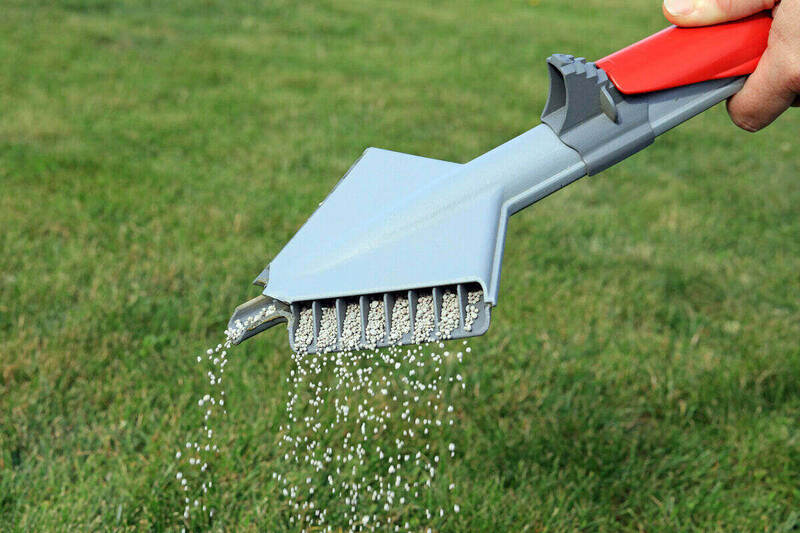
Just as BBQ sauce was developed to keep barbecued meat tender and juicy and bring out its best taste and flavor, specialty fertilizers were created to optimize turf growth in specific situations. Well-known examples are starter fertilizers, weed and feed, and winter fertilizers.
Starter Fertilizers
Starter fertilizers are mixes of nitrogen, phosphate, and potash meant for feeding newly seeded lawns or freshly installed sod. They help young grass build strong roots, healthy leaves and stems, and a resilient immune system.
According to Penn State University, common starter fertilizer NPK ratios are 10-10-10, 16-8-8, 20-10-10, 10-6-4, and 15-10-10. Starter fertilizers are available in slow- and fast-release options.
Weed and Feed
Weed and feed products combine lawn nutrients with a pre- or post-emergent herbicide (or both) in the same package. This sounds amazing, as they can feed the grass while keeping the weeds under control. However, in the long term or if used incorrectly, weed and feed can harm the lawn.
For example, herbicides are usually applied as spot treatments in infested areas. But, with a weed and feed product, the mix must be spread all over the lawn, increasing the risk of the herbicide harming the grass and polluting the environment.
Note: If you need to overseed the lawn, look for a weed and feed that can be used on newly seeded lawns such as Scott Turf Builder Triple-Action with mesotrione. Regular weed and feed can prevent seeds from germinating.
See Related:
Winter Fertilizers
Think of winter fertilizers as the last opportunity to treat soil deficiencies that might compromise lawn health during the winter. Applied in mid- to late fall, winter fertilizers can help:
- Increase nutrient reserves in the grass roots and crowns.
- Improve grass plants’ resilience to winter desiccation, snow mold, and other types of winter damage.
- Support faster green up next spring.
What winter fertilizers have in common is a higher potassium content than regular fertilizers. Products meant for cool-season grasses also include nitrogen, but they are usually low in nitrogen to prevent forced green up.
Note: It is not advised to apply nitrogen to warm-season lawns after mid-September. If the soil is deficient, apply a potassium fertilizer (e.g., 0-0-20). If you want to prolong the green color, apply iron.
See Related:
Granular vs. Liquid Fertilizers
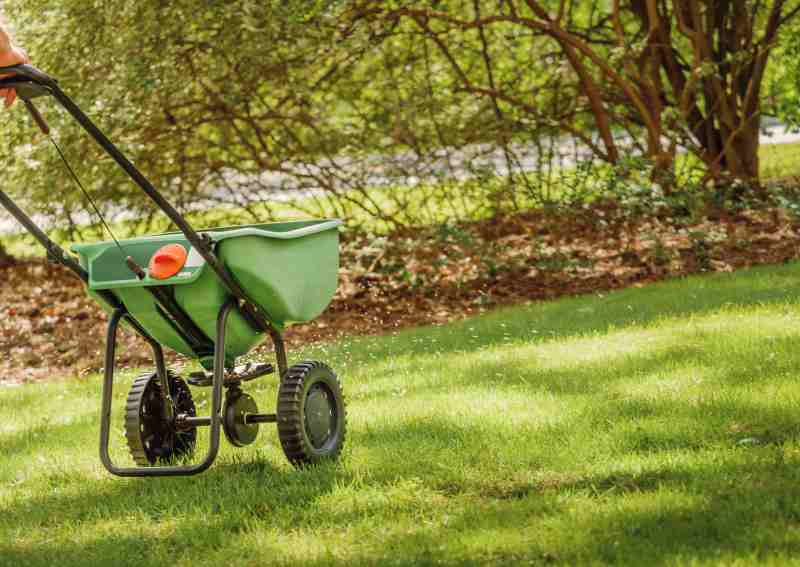
When choosing between granular and liquid fertilizers, consider your lawn’s requirements and how fast you need or want to see results.
Applied as dry pellets, granular fertilizers can last for up to five months, making them a good option for:
- Large lawns where repeated applications are a hassle.
- Steady, long-term lawn feeding of established grass.
- Sandy soils, which are less able to hold nutrients for longer periods.
Zdybowicz says granular fertilizers are “ideal for early-season applications,” while liquid fertilizers are “perfect for addressing urgent lawn needs during active growth periods.”
Some liquid fertilizers are applied to the soil, and others can be sprayed on the grass blades as a foliar treatment. The fast action makes liquid fertilizers a good option for:
- A fast boost of nutrients to get a new lawn going or revive a struggling lawn.
- Late-fall applications, when there’s not enough time for granular fertilizers to be absorbed.
- Spoon-feeding the lawn (applying low rates of 0.1 to 0.25 pounds of nitrogen per 1,000 square feet every one or two weeks).
Liquid fertilizers are often available in containers that can be connected directly to the garden hose for a smooth application. Granular fertilizers, on the other hand, require a spreader to ensure a uniform application.
Pro Tip: While most liquid fertilizers for grass are synthetic, you can also choose an organic one such as liquid kelp and liquid fish emulsion.
See Related:
Seasonal Considerations
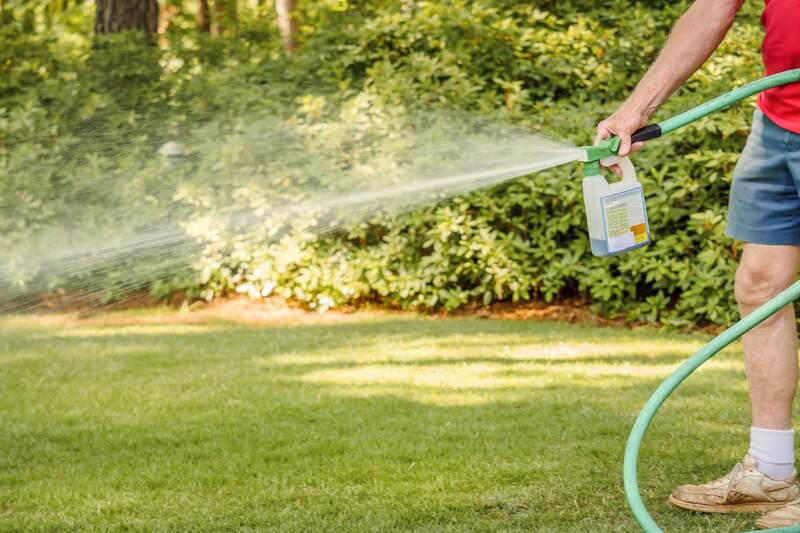
Some municipalities have fertilizer blackout periods when applying fertilizers with nitrogen and phosphorus is prohibited. Most fertilizer blackouts correlate with:
- The rainy season (e.g., June through September in Florida)
- The time the soil is frozen (e.g., November through March in Mid-Atlantic and northern states).
That’s when the risk of runoff and fertilizers leaching into the waterways is higher.
Turfgrass also has different nutrient needs across the year, as it goes from dormancy to active growth and then dormancy again. Here’s what to consider when choosing the fertilizer every season.
Spring
At the start of a new growing season, the goal is to allow your lawn to exit dormancy in its natural rhythm. Focus on providing the nutrients it needs to grow deep roots and develop stress resilience.
To prevent fertilizer burn, use a slow-release fertilizer that gradually disperses nitrogen over a few weeks. Look for fertilizers with an NPK ratio of 3-1-2 or 4-1-2 (e.g., a 16-4-8 fertilizer). Fertilize only once the grass is actively growing (around the time of the first mow).
Note: The NPK ratio tells the ratio between the NPK numbers. You obtain it by dividing the NPK numbers by the smallest one.
Summer
Warm-season grasses peak in growth during the summer, so the goal is to provide a fertilizer high in nitrogen that can support this accelerated growth. Look for fertilizers with at least 20% nitrogen, like the 20-0-10 Almighty Lawn Fertilizer.
Potassium and phosphorus are less important now, unless the soil is deficient. Potassium and phosphorus deficiencies are more common on sandy soils, which are less able to retain nutrients.
Note: During summer, cool-season grasses enter dormancy and typically don’t require fertilization. However, if you continue to irrigate and keep the lawn going, use a fertilizer low in nitrogen and high in potassium (e.g., 10-0-20) to improve its resistance to heat and drought.
Fall
Fall fertilization focuses on lawn recovery after summer stress and preparations for the winter season.
From late summer to early fall, use a high-nitrogen fertilizer with at least 50% slow-release nitrogen and some potassium to help the grass recover from summer stress. A good NPK ratio is 3-0-1 or close to it.
Warm-season grasses should not be fertilized with nitrogen after mid-September since it can delay dormancy.
For mid- to late-fall applications, use a high-potassium fertilizer with fast-release nitrogen for cool-season grasses. This improves grass hardiness and ensures the nitrogen is absorbed before the grass enters dormancy. Good NPK ratios for mid- to late fall are 1-0-1 or 2-0-1 or close to it (e.g., 21-0-20 or 19-2-13).
While they are still actively growing, warm-season grasses can benefit from an iron application to prolong the green color. If the soil is deficient, apply a potassium fertilizer to boost the grass’s cold-hardiness.
See Related: When to Fertilize Your Lawn
Winter
Don’t apply fertilizer during winter when the grass is dormant.
Additional Enhancements for Your Lawn
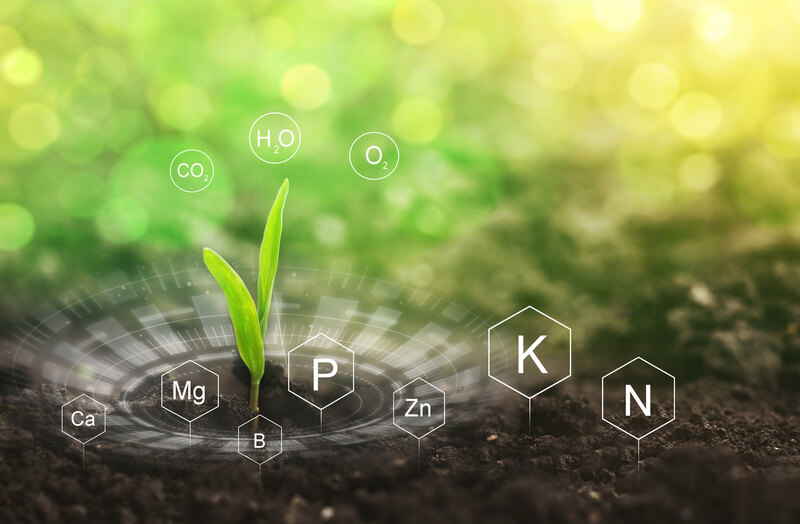
Even though they’re needed in smaller amounts, secondary nutrients and micronutrients are important for grass to function and grow properly.
Magnesium
Magnesium is essential for chlorophyll production and improves grass’s ability to perform photosynthesis, produce energy, and grow. According to the Louisiana State University Extension, you’re more likely to deal with a magnesium deficiency if grass grows on sandy soil, acidic soil, or a soil with excess calcium, potassium, or sodium.
The deficiency can be treated with a magnesium fertilizer and by adjusting the soil pH as necessary.
Pro Tip: Experts at the University of Florida say foliar applications have better results than spreading granular fertilizer on the soil.
See Related: Signs of Acidic Soil in Your Lawn (Low pH)
Sulfur
Sulfur improves nitrogen, phosphorus, and potassium uptake and supports general plant growth. It’s also the main type of soil amendment to lower soil pH on lawns with alkaline soil. If you notice stunted growth on your lawn and younger blades starting to yellow, you might be dealing with a sulfur deficiency.
However, these symptoms are common to other nutrient deficiencies, so before buying a sulfur fertilizer, take a soil test. Sulfur deficiencies can appear in sandy soils and soils poor in organic matter.
See Related:
Calcium
Calcium is essential for leaf and root development and supports the soil’s microbial life. A fertilizer with calcium is something to consider if you notice grass blades curling or developing purple edges and dry tips. Calcium deficiencies also lead to stunted growth and are more common in sandy soils.
Iron
Iron gives the grass a deep, vibrant green, supports efficient photosynthesis, and helps the turf maintain its color for longer in late fall and early winter. You can use a fertilizer with iron to treat iron deficiency or to improve the lawn’s color late in the season.
Zdybowicz says where iron is missing, there might also be a manganese deficiency, “especially in alkaline soils.”
“Both are vital for chlorophyll production. If one is low, the other might be too, so it’s smart to treat them together,” says Zdybowicz, recommending homeowners to consider “chelated iron products that also include manganese.”
See Related:
Other Things to Consider
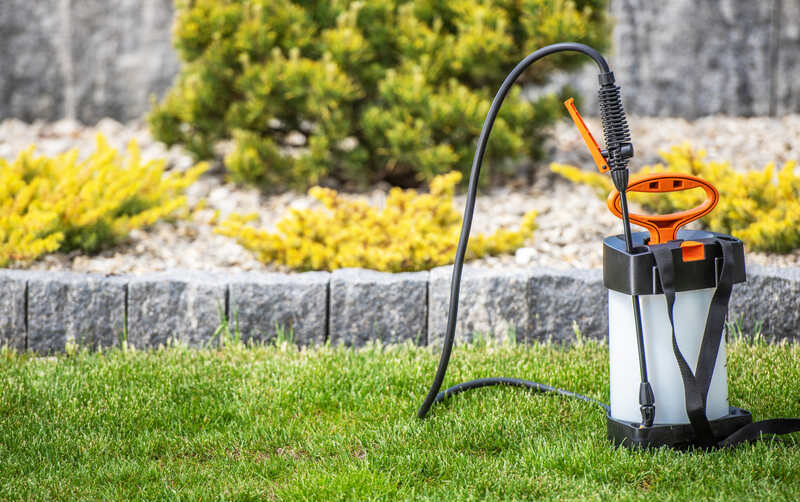
Have you covered everything? Not just yet. Before you decide on the right fertilizer for your turfgrass, consider how much you are willing to spend on fertilizers, the time and effort required to apply the product, and what you can do to keep the environment free from nutrient pollution.
Lawn Size
If you have a small, cozy lawn under 1/4 acre, you might be able to apply a liquid fertilizer every two to four weeks, but that’s simply not practical on a large lawn. Granular slow-release fertilizers are a better choice for large surfaces because they need to be applied only once every couple of months.
Packaging also matters. Fertilizer bags weighing 5 to 10 lbs are more suitable for treating a small lawn. They minimize waste and are easier to handle and store. If you have a large lawn, bulk options weighing 20 to 50 pounds often provide better value for the money.
Budget
To keep the lawn care budget low while also feeding your grass the right fertilizer for healthy growth, do this:
- Do a soil test to ensure you feed your lawn only the nutrients it needs and avoid paying for nutrients the soil already has in adequate amounts.
- Choose granular fertilizers for regular maintenance and apply liquid fertilizers only if you need a quick fix.
- Buy in bulk.
- Recycle the grass clippings as mulch.
- To go organic, learn to compost garden debris and kitchen scraps and buy organic fertilizer manufactured locally from local raw materials.
See Related: How to Use Compost in Your Yard
Environmental Impact
Excess phosphorus and nitrogen leaching into waterways from overfertilized lawns pollutes streams, rivers, and lakes and harms aquatic life. This long-term damage is hard to correct but easy to prevent by exercising moderation when choosing and using lawn fertilizers.
Here’s what you can do to protect the environment while still enjoying a beautiful lawn:
- Choose slow-release fertilizers over fast-release whenever possible.
- Select a non-phosphorus fertilizer if you don’t have a soil test that shows a phosphorus deficiency.
- Avoid spreading more nitrogen than recommended for your type of turf.
- Replace synthetic fertilizers with organic alternatives when possible.
See Related:
Local Regulations
Before selecting a fertilizer for your lawn, check the local regulations. At least 11 states across the country ban or restrict the use of phosphorus fertilizers on lawns, including: Maine, Maryland, Michigan, Minnesota, New Jersey, New York, Washington, and Wisconsin.
Most allow some exceptions such as:
- The use of phosphate fertilizer to establish new lawns by seed or sod.
- Treating a phosphorus deficiency if proven by a soil test.
- Applications of phosphate in an organic fertilizer.
Seasonal restrictions are more widespread. They limit phosphorus and nitrogen applications in the winter, when the soil is covered in snow or frozen, and during the rainy season, when there is a high risk of runoff.
See Related: Cities Limiting Use of Lawn Fertilizers and Pesticides
FAQ
If you need a quick green up, apply a small amount of liquid fertilizer with fast-release nitrogen. It can be synthetic or an organic option, such as liquid kelp or liquid fish emulsion. Spreading liquid iron can also help the lawn grow faster and greener by helping the grass produce more chlorophyll.
The cost of fertilizing the average lawn varies between $103 and $343, depending on the type of fertilizer used.
The 10-10-10 fertilizer available for lawns is considered an all-purpose fertilizer and can also be used to fertilize flowering plants and shrubs. However, you typically get better results when you use a fertilizer specifically formulated for the types of plants you grow (flowering plant, shrubs, veggies, etc.)
Leave the Choice to Professionals
Local lawn care professionals know exactly what your grass type needs every season. With LawnStarter, you can find a trusted lawn care company nearby and have your turf perfectly cared for to achieve the thick, vibrant look you love.
LawnStarter pros can also help you save time by taking on any lawn care task you would rather set aside, from leaf removal and lawn mowing to aeration and dethatching.
Sources:
- Clemson Extension Home & Garden Information Center. Centipedegrass Yearly Maintenance Program
- Louisiana State University. Louisiana Home Lawn Series: Calcium & Magnesium
- Penn State University Extension. Lawn Establishment
- Penn State University Extension. Turfgrass Fertilization: A Basic Guide for Professional Turfgrass Managers
- University of Florida Extension. Calcium for Florida Turfgrasses
- University of Florida Extension. Magnesium for Florida Turfgrasses
- University of Missouri. Reducing the Risk of Turfgrass Diseases
- Zdybowicz, Michelle of Jeden Bioscience. Personal Interview.
* LawnStarter participates in the Amazon Services LLC Associates Program, an affiliate advertising program. LawnStarter may earn revenue from products promoted in this article.
Main Photo Credit: Shutterstock